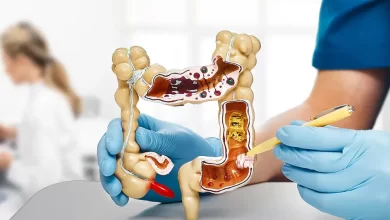Polymyalgia Rheumatica; Symptoms And Causes
Polymyalgia rheumatica is an inflammatory disorder. It will cause pain and stiffness in your muscles, especially in the hips and shoulders. Sings of this disorder usually start quickly, and they are known to get a lot worse in the morning. In most cases, people can develop this disorder after the age of 65, but rare under 50 years of age.
There are some diseases that could mimic polymyalgia rheumatica. For example, ankylosing spondylitis is a chronic inflammatory disease and it will affect your peripheral joints and spine. If you want to know more you can visit https://arthritiscare.com.au/ankylosing-spondylitis or simply talk to your doctor.

Polymyalgia rheumatica can cause a lot of pain in the morning
Symptoms of polymyalgia rheumatica
The usual symptoms of this disorder will appear on both sides of the body. The symptoms could include some or all of the following:
- Pain and aches in the body; shoulders, neck, hips and thighs, buttocks, upper arms.
- Limited range of motion in the areas that are affected.
- Pain and stiffness in the knees, wrists or elbows.
- Stiffness in the affected areas, especially after a long period of inactivity, like waking up in the morning.
Keep in mind that there are other more general symptoms that you could experience as well. For example:
- A mild fever.
- Fatigue.
- Appetite loss.
- A general feeling of being unwell.
- Unintended weight loss.
- Depression.
In case you start to experience any of the symptoms that were mentioned above, it is time to visit your doctor. You can also visit https://arthritiscare.com.au/service/polymyalgia-rheumatica or search online to learn more about this disorder. Keep in mind that any new pain or stiffness should not be considered normal, especially if it disrupts your daily lifestyle.
What causes polymyalgia rheumatica?
There is no exact known cause of polymyalgia rheumatica, but there it is known that there are two factors that contribute to the chances of having polymyalgia rheumatica. First one is genetics or a variation of genes, that make it more likely for you to have polymyalgia rheumatica. The second one is the environment.
There are some studies that shown that polymyalgia rheumatica comes in cycles, and that means that it is probably seasonal. There are some things that could be the trigger, such as a seasonal virus or similar. However, there is no actual proof that any of the viruses cause polymyalgia rheumatica, so one can never be 100% sure. Whatever the case might be, if you experience pain and stiffness, visit your doctor.

Talk to your doctor to learn more about polymyalgia rheumatica
Final word
There are some diseases that have very similar symptoms to polymyalgia rheumatica, and thus are a bit more difficult to diagnose. For example, giant cell arteritis is known to have very similar symptoms to polymyalgia rheumatica, and it is also an inflammatory disease. The people who have one condition, are probably going to have symptoms of the other condition, which can be difficult to diagnose.



